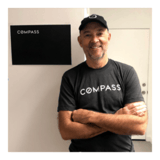Summary
Peter Morville, a pioneer in information architecture, shares his journey from library science to helping organizations tackle complex information challenges. Through his work with Macy’s, he learned that surface-level fixes fail without deeper systemic change. At the Library of Congress, he encountered organizational culture as a barrier even when governance and authority were aligned for reform. His work with a database vendor revealed the tension between valuing complexity and the need for elegant simplicity. Morville underscores the evolution from viewing organizations as machines to understanding them as ecosystems, emphasizing systems thinking and the core role of context, connections, and culture in user experience. He discusses key models like fuzzy and centered sets for categories, the significance of keystone species in ecosystems, and the dynamics of changing culture through double loop learning. Drawing lessons from natural ecosystems, philosophy, and architecture, he advocates for mapping invisible systems and co-creating change within organizations. Throughout, Morville stresses the intertwined nature of information, culture, and design and calls for embracing organic simplicity inspired by nature to create better digital and organizational environments.
Key Insights
-
•
Surface-level improvements in information architecture often fail without addressing deeper organizational culture and governance.
-
•
Organizational culture can be a powerful barrier to change, even when authority and governance structures are in place.
-
•
Complex products can be resistant to simplification because cultures often celebrate complexity despite recognizing the need for simplicity.
-
•
Systems thinking helps us understand organizations as ecosystems rather than machines, requiring new models and metrics.
-
•
Categories are not always clear-cut; most have fuzzy or centered boundaries, which better reflect real-world cognition and culture.
-
•
Mapping connections in space and time reveals consequences and feedback loops that influence system behavior.
-
•
Context is central to information architecture and user experience; understanding user and organizational context is crucial.
-
•
Changing culture requires ‘double loop learning’—shifting underlying beliefs, not just behaviors—and is inherently difficult.
-
•
The concept of keystones in ecosystems is a powerful metaphor for critical elements that hold complex systems together.
-
•
Mapping invisible systems and sharing these maps are vital acts for collaboratively navigating complexity towards clarity.
Notable Quotes
"Every few years consultants come in and tidy up our mess, but as soon as they leave, we mess it all up again."
"The Library of Congress web presence was a findability nightmare, like the Winchester Mystery House."
"When you’re in a culture that celebrates complexity, making things simple is still a very hard thing to do."
"Categories are dangerous but not bad."
"Most categories are fuzzy; there’s no clear boundary between what’s in or out."
"We often use radio buttons when check boxes or sliders would reveal the truth."
"The system always kicks back—the consequences of our actions unfold over time."
"Changing culture is hard because we’re willing to change actions but resistant to changing beliefs."
"Information architects use nodes and links to create environments for understanding."
"When we understand organizations as ecosystems, we recognize the need for organic simplicity."
Or choose a question:
















More Videos

"Design thinking is for everybody. It’s collaborative, inclusive, and cross-disciplinary."
Doug PowellClosing Keynote: Design at Scale
November 8, 2018

"Middle schoolers might ask you tough questions about release forms and how their data will be used."
Mila Kuznetsova Lucy DentonHow Lessons Learned from Our Youngest Users Can Help Us Evolve our Practices
March 9, 2022

"Artifacts of the future help us envision and grasp the change that we’re hoping to have—it’s not just bullet points or vision statements."
Sarah GallimoreInspire Progress with Artifacts from the Future
November 18, 2022

"Field usability testing showed stakeholders immediately how much value UX can add by catching issues before deployment."
Lada Gorlenko Sharbani Dhar Sébastien Malo Rob Mitzel Ivana Ng Michal Anne RogondinoTheme 1: Discussion
January 8, 2024

"We created an AI persona called Dreamweaver to answer real-time team capacity and project questions."
Alnie FigueroaThe Future of Design Operations: Transforming Our Craft
September 10, 2025

"You shouldn’t send another survey unless you’ve implemented changes and allowed time for behavior to adapt."
Landon BarnesAre My Research Findings Actually Meaningful?
March 10, 2022

"Truly listening can push us beyond empathy to respect and reflection."
Emily EagleCan't Rewind: Radio and Retail
June 3, 2019

"We did a blended approach with a visual refresh first to minimize differences between old and new and buy time."
Malini RaoLessons Learned from a 4-year Product Re-platforming Journey
June 9, 2021

"Design is not just aesthetics; it’s about what the product feels like, sounds like, and how it differentiates in the market."
Asia HoePartnering with Product: A Journey from Junior to Senior Design
November 29, 2023
Latest Books All books
Dig deeper with the Rosenbot
How can AI enable product managers and designers to participate more effectively in research and prototyping?
What challenges and stressors do service designers face as the organizational 'glue' and leaders?
How can service designers socialize their role effectively within organizations dominated by non-design logics?
















